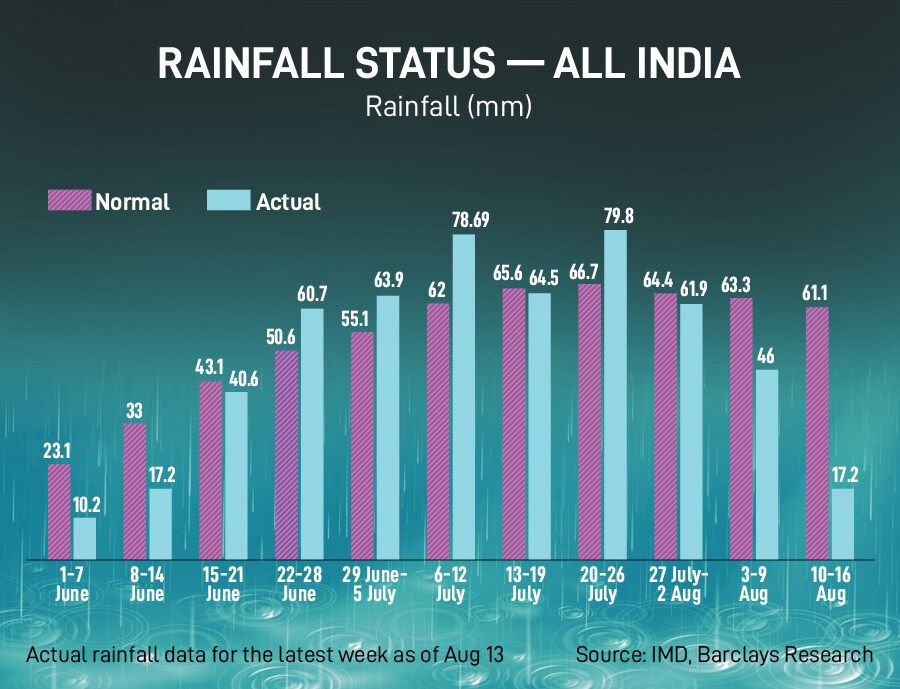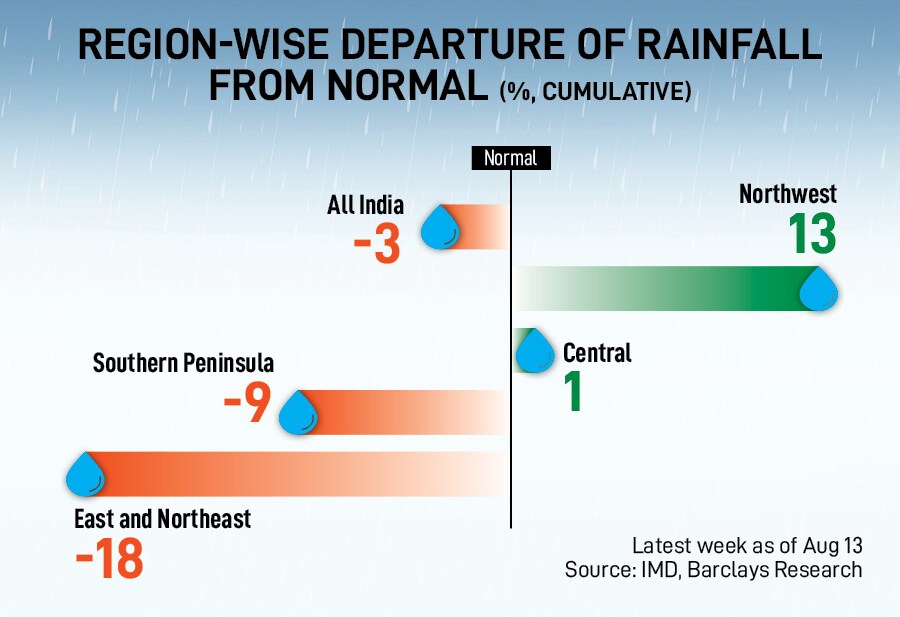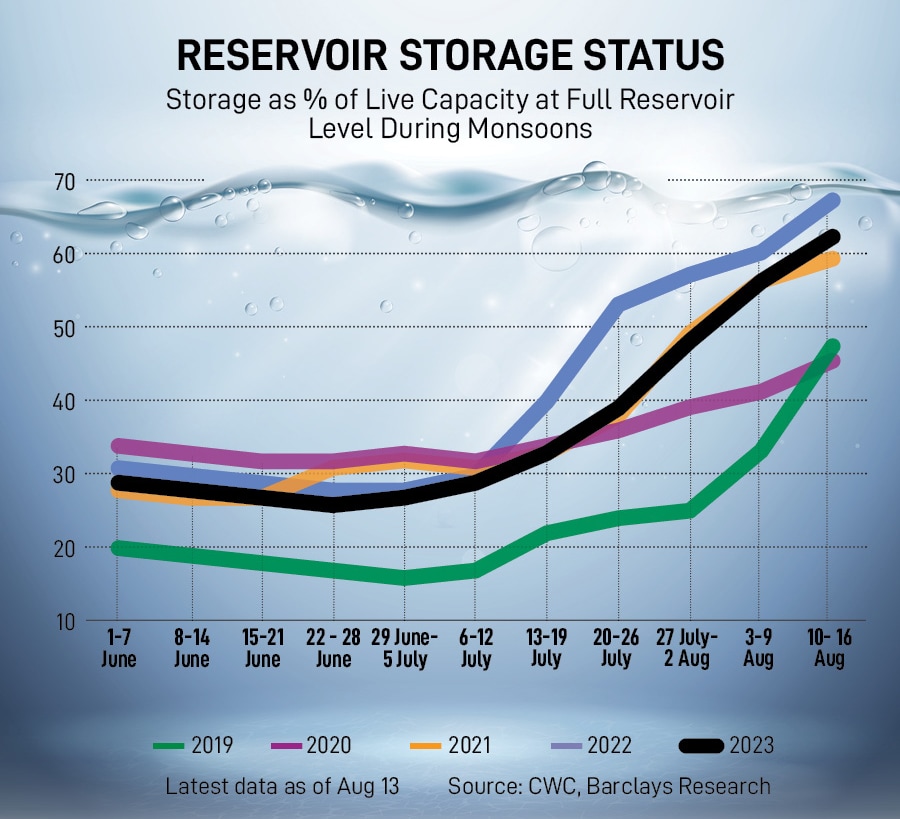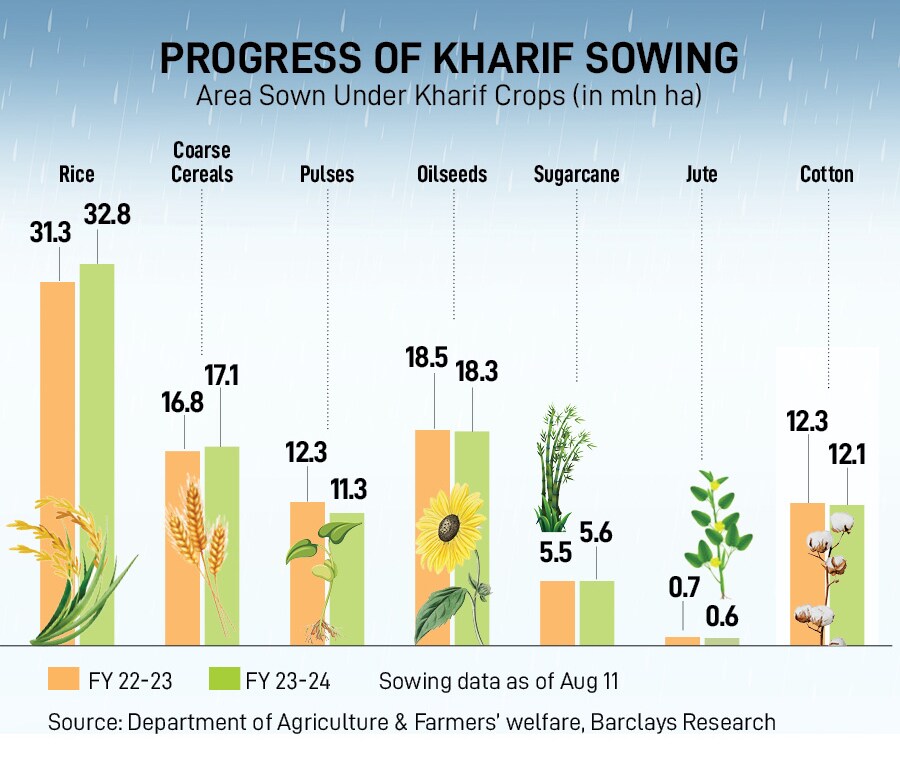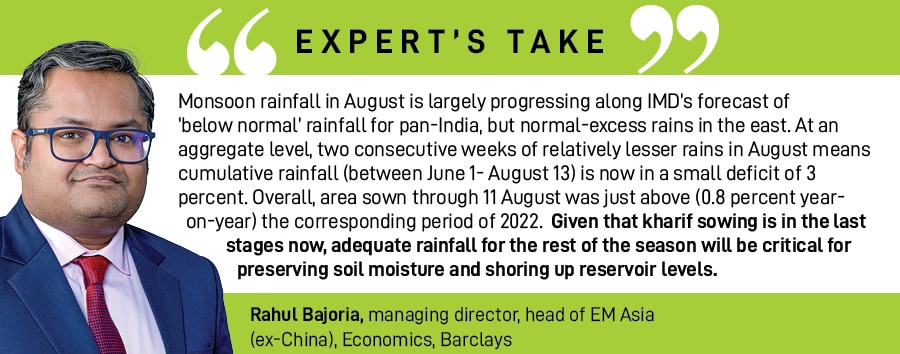
Rain watch for Aug 10-16: Monsoon pauses, kharif sowing nears final stages
Rainfall was low across most parts of the country, but the eastern region caught up. Adequate rains for the rest of the season will be critical for preserving soil moisture and shoring up reservoir levels for the rabi season
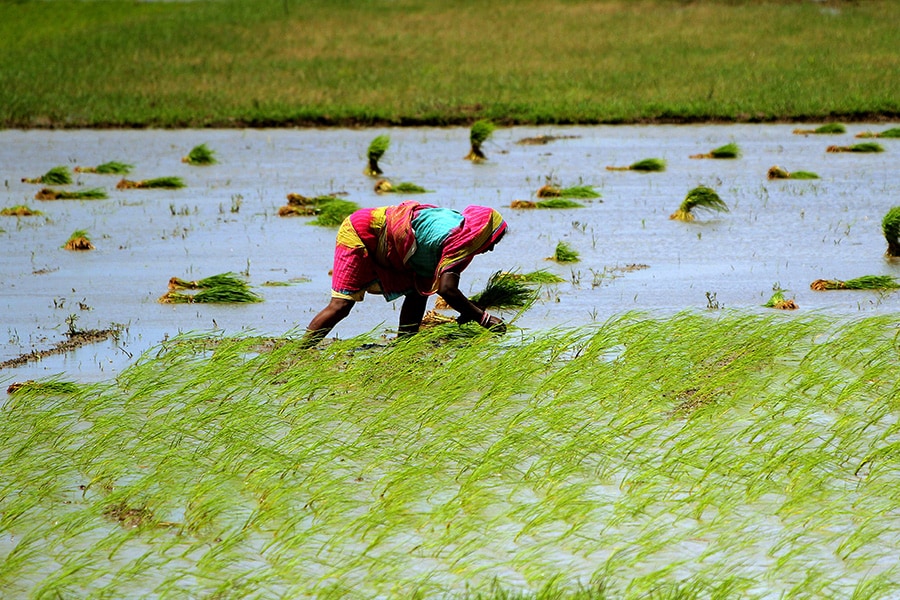 The distribution of rainfall so far in the month is broadly in line with IMD’s forecast of ‘below normal’ rainfall for pan-India, with heavy rains in the east.
Image: STR/NurPhoto via Getty Images
The distribution of rainfall so far in the month is broadly in line with IMD’s forecast of ‘below normal’ rainfall for pan-India, with heavy rains in the east.
Image: STR/NurPhoto via Getty Images
Rainfall has slowed down over the past week, except in the eastern region. Most regions of the country faced deficient rains, compared with the corresponding ‘normal’ week, according to an analysis by Barclays based on Indian Meteorological Department (IMD) data.
The cumulative surplus through last week is exhausted, with overall rainfall at the normal level for the period June 1 to August 10, says Barclays. After a deficient rainfall throughout June and July, the eastern region seems to be playing catchup as it has now seen excess rains in the first two weeks of August. However, cumulatively, rains in the eastern region still remain deficient.
